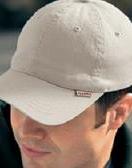
Spoiled broth is a result of many different reasons such as having the wrong pots and pans or carelessness of the cook. While the element of personal biasness is yours to deal with, choosing the right cookware is extremely important.
Stainless steel and aluminium kitchen designs are the rising trend however require extra care and maintenance for longevity which is significant in the case of aluminium. It's a common metal used for both industrial and non-industrial applications whereas in most cases, choosing between the different grades of aluminium can be a real pain in the neck.
For projects without special structural or physical demand and the aesthetics aren't too much important, any aluminium grade would deliver the purpose. We've listed different aluminium grades and their properties so that you may choose the perfect for aluminium kitchen designs.
The grade is pure aluminium in its commercial form being soft and supple. It has excellent workability which makes it ideal for sophisticated applications and formation. You can weld it using any method however aluminium bearing alloy 1100 grade is non-heat treatable. It has amazing resistance to rust and corrosion being commonly used in the food and chemical processing industries.
This grade of aluminium is known for having a high mechanical strength and excellent machining capabilities. It's usually termed as free machining alloy (FMA) and rather a premium choice for lathes/machine tools especially those going for aluminium kitchen designs. The superfast machining bearing the grade is known to produce finer chips that can be removed easily. Alloy 2011 is a preferred choice during manufacture of complex and detailed parts.
It's a combination of copper based alloy bearing super strength and excellent machining capabilities. Due to its resistance feature, alloy 2014 is used in structural applications of aerospace. Some of the most contemporary homes and real estate developments may prefer aluminium kitchen designs with alloy 2014 grading.
It's among the widely used aluminium alloy known for its high strength combined with fatigue resistance. Alloy 2024 is commonly used where preference is given to good strength-to-weight ratio. The grade can be machined to a high finish as well as can be hardened with sufficient heat exposure which is possible only in a controlled environment. Resistance to corrosion however is low and this is the reason alloy 2024 is used commonly in a cladded form or anodised finish also known as Alclad.
Most of the aluminium kitchen designs use alloy 3003 which is in its pure commercial form. Addition of manganese boosts its strength to more or less 20 percent as compare to the alloy 1100. Resistance to corrosion, workability and durability are excellent whereas you can spin, weld and braze this grade at a certain temperature.
This is among the highest strength alloy of the many non-heat treatable grades with fatigue strength far greater than any other aluminium. Alloy 5052 offers good corrosion resistance with ability to easy drawn or formed into many different complex shapes.
One of the most versatile heat-treatable aluminium alloy bearing qualities of premium-grade! Alloy 6061 delivers a great many mechanical and corrosion resistance properties with good workability in galvanised condition. It can be welded following every known method and furnace brazed as well so it's used in many different products and applications especially where better corrosion resistance, appearance and super strength are required altogether.
Also known as architectural alloy in common, alloy 6063 has all the reasonable high tensile properties, superb finishing characteristics and high degree of resistance to corrosion. It's commonly found in various exterior and interior architectural applications and trim with suitability to anodising applications.
Highest strength aluminium alloy to exist! Alloy 7075 has excellent strength-to-weight ratio and ideally used for stressed parts. If your aluminium kitchen designs happen to have this particular alloy, expect the best and lasting results!
Conclusion
Special thanks to Alkhaleejion, a احدث تصميمات المطابخ specialist, for providing such amazing insights around the topic. Now that we know about different grades and properties of aluminium, choose wisely!

